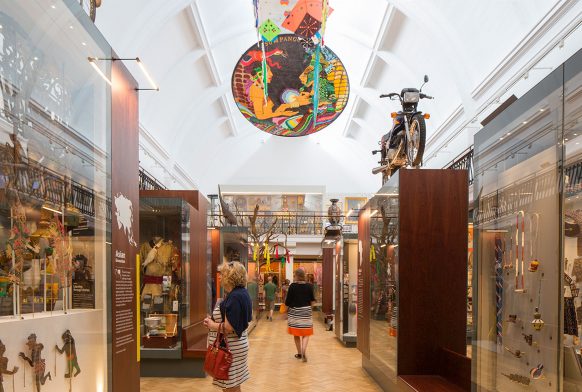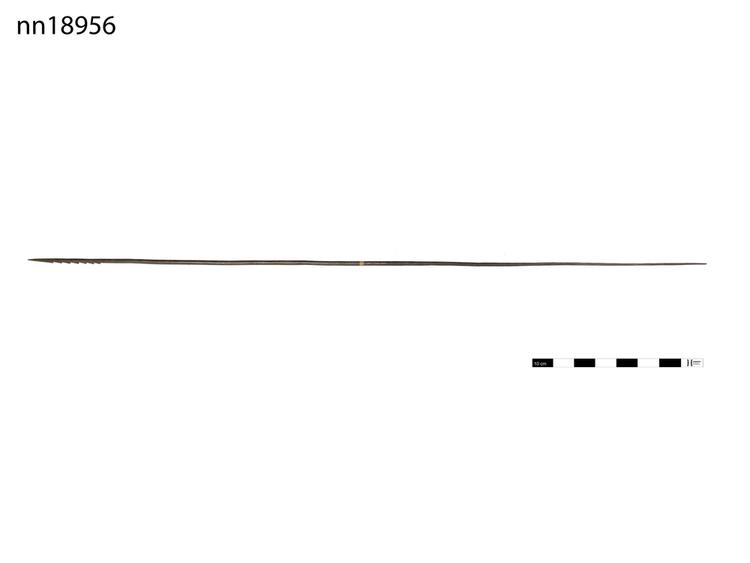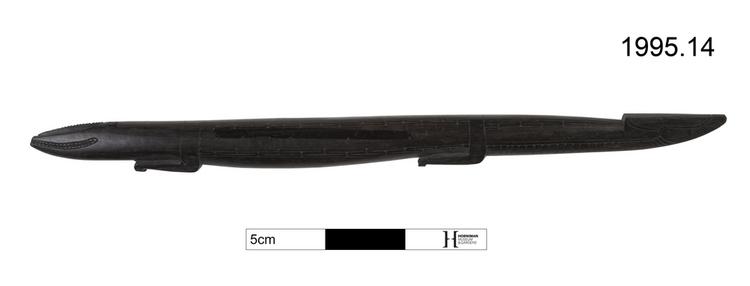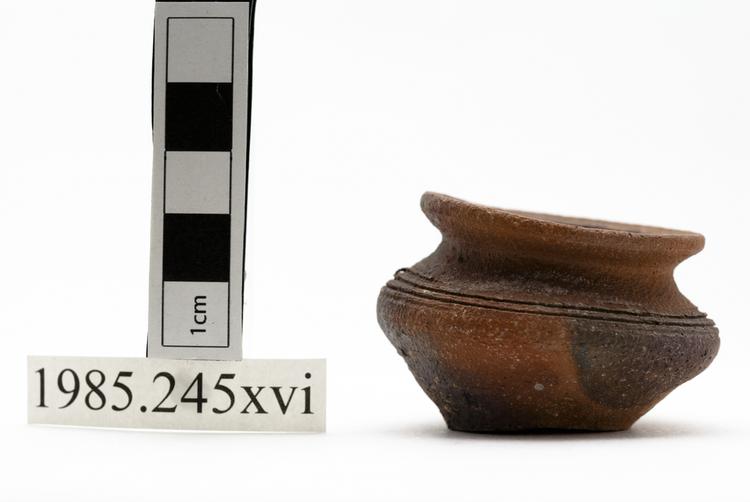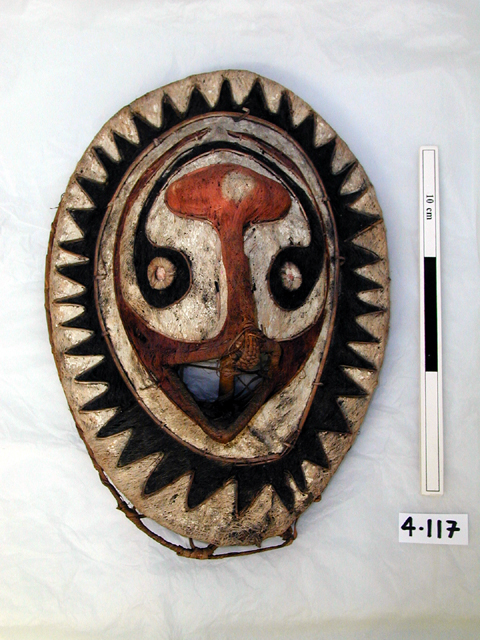
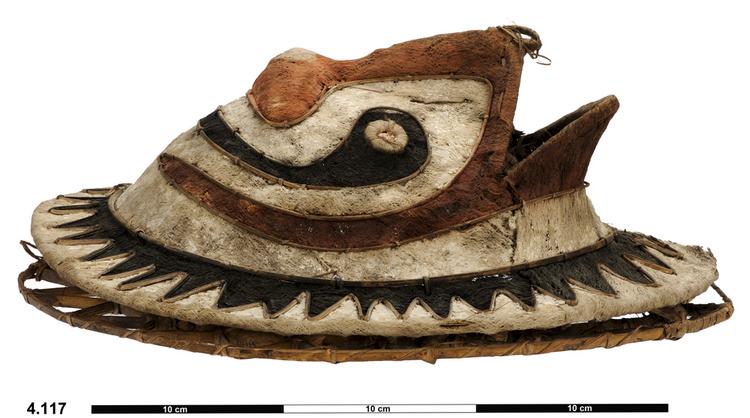
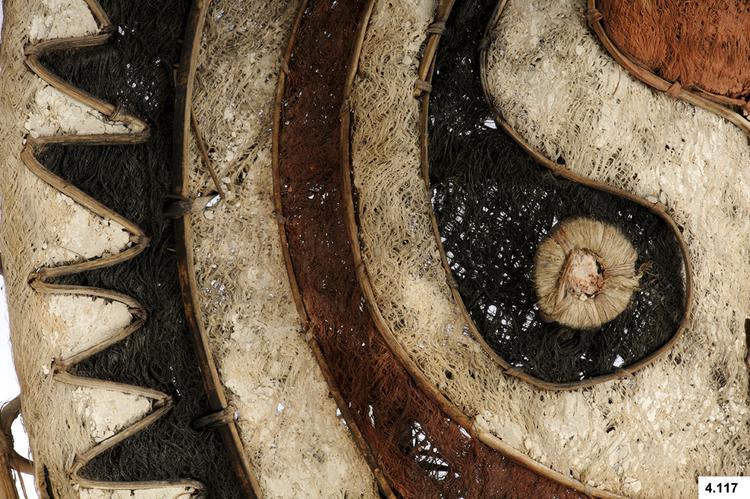
Dance mask associated with the 'ma hevehe' ritual cycle. While traditional hevehe masks are large and restricted to be manufactured only by those men who have purchased the right, this eharo mask is a comical figure that introduces feelings of happiness and humour into the ritual cycle.
Clowning Dance Mask, Eharo, Elema People, Papuan Gulf, Papua New Guinea. The Hevehe ceremony was a central part of traditional Elema life, and could take up to twenty years to run its full course. The serious business of Hevehe focused on bringing powerful Ma Hevehe spirits into the village from the sea where they lived; these spirits took the form of enormous and terrifying masks up to 7m tall which appeared out of the men’s initiation house (eravo) at the ceremony’s climax. Lightening the tone of the ceremony in its early stages, months or years before the appearance of the Ma Hevehe, were the Eharo masks. Frequently representing ridiculous members of Elema society (balding men, the lecherous and uninitiated boys) the Eharo masks were worn by clowns who danced at the completion of a high, narrow doorway on the façade of the eravo house, which enabled the Ma Hevehe masks to leave the house one they were completed. Made from painted barkcloth stretched over a framework of split bamboo, Eharo were light to wear, but obscured the user’s vision almost entirely. Such masks were brought to the eravo house of the village hosting that particular Hevehe ceremony from the many surrounding villages who participated in it, and the masks were kept in the house until the completion of the ritual. Then they were all burnt or simply thrown away. Wood, barkcloth, pigment. Late 19th Century. Formerly in the private collection of Mr W.D. Webster.



